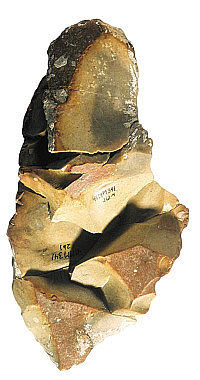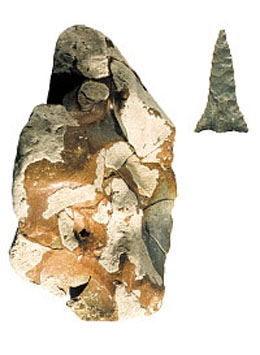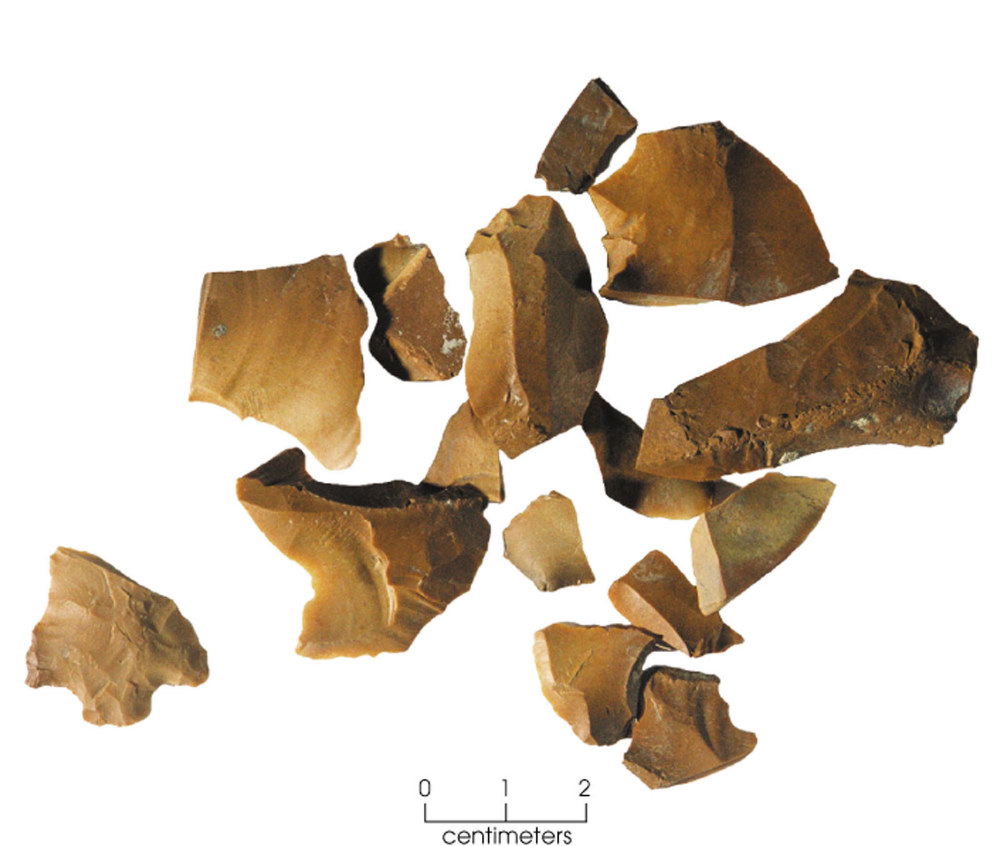From Cobbles to Tools ...and Back Again |
||
To confirm that stone debris was associated with a particular debris pile, analyst Eloise Gadus had to piece together like flakes and chunks to see what was broken apart and what was being made. This refitting of stone fragments is time consuming. Gadus did it by spreading out all the groups of like materials from each debris pile and trying to fit pieces of each group back together. This is like a three-dimensional puzzle that has half of its pieces missing. It requires the analyst not only to compare color, texture, and inclusions across multiple groups, but also to remember and compare shapes of pieces that might fit together. It is also helpful for the analyst to have a good idea of how chert breaks and how prehistoric knappers made tools. Still, refitting was the only way to prove that the debris piles represented separate knapping episodes. The number of refitted flakes per pile ranged from 0 to 69 with an average of 5 refits per pile. Pile 1 had the largest number of refits. This may be because that pile also produced the most cores and core fragments, and it was easier to refit larger chunky pieces such as cores than smaller flakes and chips. Matching and refitting of like stone pieces within the debris piles allowed the analyst to identify a minimum number of cobbles that were broken within each pile. This number ranged between 10 and 21, with the average being 14 cobbles per pile. Seventy-eight percent of the debitage in each pile could not be matched or refitted, though. This almost certainly indicates that the Indians made tools from additional, unrecognized cobbles. One of the cobbles from Pile 1 was almost completely reconstructed; it is only missing one large interior flake. The missing flake appears to have been broad enough that a knapper could have used it to fashion an arrow point. Curiously, a broken arrow point of the same color and texture of stone and with the same white inclusions was recovered near a surface hearth adjacent to Pile 1. It is possible that this point was made from the missing interior flake. This arrow point, which has its stem broken away and appears to have broken while someone was using it, represents some of the things that people did around hearths. It indicates tool making, certainly. But it also is possible that the person who made the point killed an animal with it. He then brought the animal, with the point still inside it, back to camp and butchered it. Perhaps it was during this process that the broken point got lost, and there, near the hearth remains, archeologists recovered it hundreds of years later. |
Nine stone flakes were refitted to reconstruct this cobble from Pile 1, and the reconstruction was extensive enough that the original cobble size of 6.3 inches could be determined. |
|
Another cobble from Pile 1 was almost |
A partially finished arrow point (shown at bottom, left) was abandoned on Pile 5 after it was broken during manufacturing. Stone debris representing Cobble 2 from Pile 5 matches the color and texture of this point. |
A knife preform (right) was recovered in three pieces from Pile 9 located in Level 7 at the southwest corner of the Main Block. The preform could be matched to debris from the pile with at least one flake fitting back to the preform. This preform was broken as it was being made; a large flaw in the stone likely compromised this tool. |


